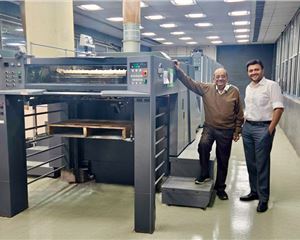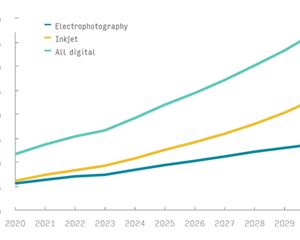Print to have gargantuan share of ad spend in 2014
GroupM, the leading media investment planning conglomerate in India, released their annual estimated advertising expenditure report called the This Year, Next Year (TYNY) 2014. Print advertising is projected to grow at 8.5% thanks to the growth of regional print publications across India.
15 Feb 2014 | By Mihir Joshi
Most media agencies and watchers are also predicting good growth rates for print in 2014. The general elections which are scheduled for April-May 2014 are expected to be a reason for the consumption of media space this year. Print medium is expected to consume at least 65% of this money, as political parties will not leave any stone unturned to reach out to the voters. Trends indicate, a lot of spend will be visible in regional print. According to industry estimates, Congress is expected to spend Rs 500 crore, BJP will spend Rs 300 crore, and all the other parties together Rs 200-300 crore.
Plus the newly introduced cap on television ads — a channel can air a maximum of 12 minutes of ads for every one hour of broadcasting — too is expected to help print media. Print media already enjoys 40% of the total advertising spend.
As per 2011 census, India’s literate population base of 895 million provides a huge target audience to print companies. The literacy rate has increased considerably over the last decade with some states such as Kerala at 94 % and the national average at 74%.
According to the Marketing Whitebook 2012, rural India accounts for 70 percent of India’s population, 56 percent of National Income and 64 percent of the total expenditure. The traditional vision of the rural economy as purely agricultural is clearly obsolete. In the liberalised era, rural India has moved away from the traditional agriculture-dependent economic practices resulting in increased income, better education and technology penetration.
Globally, the print industry has witnessed a decline in its subscription and advertising revenues due to the steady shift of consumers towards new media platforms such as the internet and mobile. In marked contrast to the global trends, the Indian print industry is growing with steady increase in both advertising and circulation revenues. Although, internet broadband penetration has been increasing at an enormous pace, current penetration levels are too low to pose a significant threat to the industry. Online reading behaviour indicates that only 35.4 percent of the Indians who ever use the internet, visit newspaper websites and only 9.9 percent of daily web users turn to their newspaper website daily. This is substantially low when compared to western countries.
For advertisers, access to mass markets remains the key, leading print players (like Dainik Jagran, Time of India, Hindustan Times, ABP) with an established reader base will always be high on the spending plans of advertisers. The overall shift of readers from print to online will continue and will get to critical mass at some point in India’s future. So print players must continue to develop innovative advertising packages combining both print and online to secure the advertising spend for their brands.
Regional players (Malyalam Manorama, Matrubhoomi, Rajasthan Patrika) increasing their foothold in key markets and also the entry of national players in regional markets (DB, The Hindu, Times of India), is a trend that is here to stay. As regional media consumption continues to rise editions with local content in regional languages will attract readers and help in consolidating the position of the newspaper, thereby attracting local advertisers. The growth story of the regional print market is stronger than ever and the publishers believe that there are ample opportunities which have yet to be tapped.
The overall Indian scenario looks promising, capitalising on future potential, however, will depend on how the industry deals with the present challenges. The sector is projected to grow at a CAGR of 8.7 percent and touch Rs 340 billion by 2017. The opportunity lies in tapping the growth potential of the Hindi and vernacular markets while concurrently the challenge will be to build additional capabilities to explore alternate sources of revenues. Circulation revenues are expected to grow at a CAGR of 4.5 percent from 2012 to 2017 on back of increased penetration in regional markets. Rising literacy, growth in disposable income, brand consciousness and strong commercial development in tier II and tier III cities will together contribute to increased penetration of regional print media.
2014 with its heady concoction of the general elections and IPL Season7promises to boost print.
Based on FICCI-KPMG’s Indian Media and EntertainmentIndustry Report 2013













 See All
See All